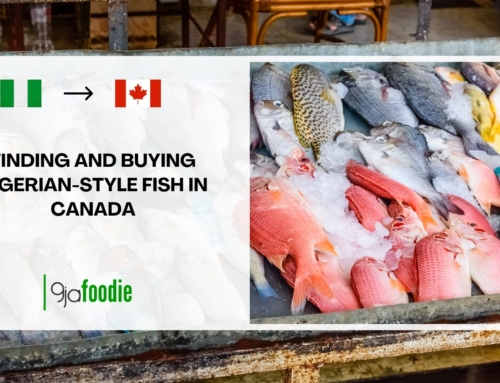Your Comprehensive Guide to Buying Meat in Canada: Exploring Quality, Variety, and Specialty Options
The pursuit of buying quality meat in Canada opens up a plethora of options for consumers. The Canadian meat market is diverse, offering a variety of choices, each with its unique characteristics and benefits. Understanding where to purchase specific types of meat, considering both quality and cost, can significantly enhance your culinary experiences.
.
How to Choose and Prep Meat cut for Nigerian cooking? Click here
Jollof Ribs lovers? Click here for a tasty recipe!
Overview of Canadian Meat Market
The Canadian meat market is rich and varied, providing a multitude of options for consumers seeking diverse and quality products. From large retail chains like Walmart and Superstore to specialized Asian Markets and local farms, each venue offers something unique to meet the diverse needs of the population.
Importance of Quality Meat
Quality meat is crucial for health and well-being, providing essential nutrients and proteins. Sourcing meat from reputable places ensures freshness, taste, and nutritional value, contributing to a balanced and wholesome diet.
Walmart: A Convenient Option to buy meat
Walmart stands as a convenient and accessible place for many Canadians seeking various meat types. The store’s extensive reach and competitive pricing make it a popular choice for everyday shopping.
Shank Region of Meat
The shank region of meat, particularly the leg, is a highlight at Walmart. Sold fresh, deboned, and meticulously packed, it offers a cost-effective solution for consumers looking for quality and convenience.
Chicken Options
In addition to the shank, Walmart is a go-to place for buying chicken. The chicken available is fresh, adding variety to the meat options present at this retail giant.
Pricing and Packaging
Walmart’s competitive pricing and efficient packaging make it a favored destination. Consumers can expect well-packaged products that retain freshness and quality.
Superstore: Variety of meats with Considerations
Superstore brings a variety of meat options to the table, with a particular focus on innards such as kidneys and liver. However, buyers should be mindful of certain considerations when shopping here.
Range of Innards
Superstore offers a range of innards, providing variety for those seeking these specific meat parts. The availability of different innards adds to the diversity of options for consumers.
Quality Considerations
While Superstore offers variety, there are quality considerations to bear in mind. For instance, shaki (towel) is usually bleached with chlorine, potentially affecting the taste.
Frozen Chicken Gizzard
The chicken gizzard sold at Superstore is predominantly frozen, which might be a consideration for those seeking fresh options.
Asian Markets: Freshness Guaranteed
For those in search of freshness and variety, Asian Markets are a prime destination. These markets guarantee fresh meat parts, ensuring quality and taste.
Diversity of Meat Parts
Asian Markets offer a diverse range of meat parts, including fresh shaki, gizzard, and hard chicken. This diversity caters to a wide audience, meeting varying consumer needs.
Freshness and Quality
The emphasis on freshness and quality is evident in Asian Markets. Consumers can expect fresh products that meet high quality standards, enhancing their culinary experiences.
Hard Chicken Availability
Hard chicken is readily available in Asian Markets, offering another option for those seeking diversity in their meat purchases.
Farms: Straight from the Source
For consumers looking to get as close to the source as possible, local farms are the ideal choice. Farms offer a range of fresh meat, including cow, chicken, and goats.
Types of Fresh Meat
Farms provide a plethora of fresh meat options. Consumers can find various meat types and parts, ensuring a comprehensive selection for diverse needs.
Sourcing Locally
Buying from farms supports local producers and guarantees freshness. It is a sustainable choice, promoting community engagement and local business growth.
Community Engagement
Sourcing meat from local farms fosters community engagement. Consumers can connect with local producers, learn more about the source of their food, and even participate in community-shared agriculture.
Comparison and Conclusion
Choosing the right place to buy meat in Canada depends on individual preferences, needs, and considerations for quality and price. Each venue – Walmart, Superstore, Asian Markets, and Farms – offers something unique. Balancing convenience, variety, quality, and price can help consumers make informed decisions and enjoy diverse, quality meat products.
Choosing the Right Place
The diversity in the Canadian meat market allows consumers to choose according to their preferences. Whether it’s the convenience of Walmart, the variety at Superstore, the freshness of Asian Markets, or the authenticity of local farms – there is something for everyone.
Considering Quality and Price
Quality and price are significant considerations when buying meat. Each place offers a balance of both, and consumers should weigh their options to make the best choice for their needs.
Final Thoughts
In conclusion, buying meat in Canada offers a rich and diverse experience. Considering individual needs and preferences, along with quality and price, can lead to satisfying and nutritious choices.
FAQs
- Why is the shank region of meat popular at Walmart? The shank region of meat is popular at Walmart due to its freshness, deboning, meticulous packaging, and cost-effectiveness.
- Are there quality considerations when buying innards at Superstore? Yes, some innards like shaki (towel) at Superstore are usually bleached with chlorine, which may affect the taste.
- What makes Asian Markets a good choice for buying meat? Asian Markets guarantee freshness and quality, offering a diverse range of meat parts including fresh shaki, gizzard, and hard chicken.
- How does buying from local farms benefit consumers and communities? Buying from local farms guarantees fresh products, supports local producers, promotes community engagement, and fosters the growth of local businesses.




Leave A Comment